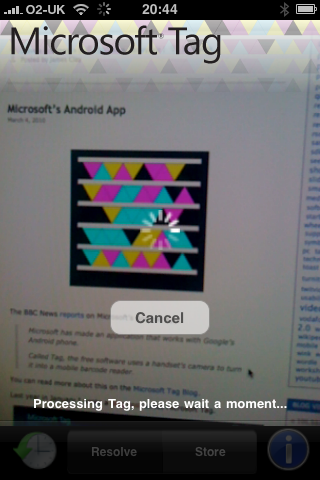I seriously did consider buying the new iPhone 4 on the day of release.
However when I was faced with this…
I couldn’t face the idea of queuing. I also had to be somewhere else too…
I am still in two minds about buying the new iPhone now, or waiting until my contract ends.
Yes it has some great new features that I would like to see and try like the new camera; however part of me is thinking is this just because it is shiny or something new and different!
What about the reception left hander issues?
Personally I think, yes there may well be an issue, but is it really worth all the column inches that have covered this? There may be a design flaw, but all devices have design flaws, doesn’t mean they don’t work most of the time. My Google Nexus One for example, if it gets too hot (from being on for too long and doing stuff) the touchscreen stops working! My old LG Viewty kept turning itself off and the only way to turn it back on again was by removing the battery! Where was the Guardian and BBC on that issue?
Of course the iPhone is selling really really well. Some estimates say 1.5million of them have been sold. So that any flaw in the design is going to impact on a lot of people, a lot more people than the flaw in the LG Viewty! That’s probably the reason behind the column inches.
I do like that even though we have moved from analogue newspapers to online news sites, the term “column inches” still works. Thought I suspect a lot of people might think “inches” what are “inches”? Wonder what the metric or European term is for “column inches”.
Anyhow even with the reception issue, I don’t think that would stop me buying one.
I have already installed iOS4 on my iPhone 3GS and am finding it useful. I like the rotation lock. I like the quick App switching. Folders I am less keen on, but they do mean I can now see all the Apps on my iPhone, whereas before some were off the screen at the end! I like the spell checking (this is also on the iPad) and as someone who can’t spall it’s grteat! Not at all impressed with the digital zoom, but then I have never been impressed with any digital zoom. Less impressed with the home screen wallpaper, the first one I tried made the whole phone look cluttered… The Nexus One does seem to do this much better. Keyboard support may be useful in some instances, I do do a lot of writing.
So what will the iPhone 4 hardware provide that is so “essential”?
Facetime sounds great, but really we have been here before. My old Nokia N73 had a front facing camera and could do video calls over 3G. Well actually I never did do video calls, the main reason was that no one I knew did video calls, so I never had one. Also when I got the N95, I tried to call myself to just see how it worked, and it never worked! Facetime only works over wifi, if I have wifi I probably have a laptop or my iMac so I would be more likely to use Skype. Another big reason I wouldn’t use Facetime, is that very few people I would call in this way would have an iPhone 4. Like the idea, but can’t how it would benefit me at this time. Should I be buying two iPhone 4s then? No I think not.
I do like the concept of the retina display. I really like the display on the Nexus One which is sharp and looks great. The 3GS has a 480×320 resolution, the Nexus One has 800×480. The iPhone 4 has 960×640 which is to be honest incredible for the size of screen, but is not that far off the Nexus One. It would be interesting to compare all three.
I do like doing video, and though many phones I have had, can do video, none have really got there. The Nokia N95 which took great images had an okay video camera, but not fantastic.
This video was taken with the iPhone 3GS and is actually not bad, certainly much better than the N95.
If the video on the iPhone 4 is as good as the video that is been shown on the web, then I would be impressed. I also like the idea of the iMovie App. I must remember though I have ReelDirector on my iPhone, I have only used it once or twice in anger!
I do like the idea of a 5MP camera, as I do use my camera a lot on the iPhone 3GS for taking images (in the main for uploading to TwitPic). Of course 5MP is nothing new, I did the same for many years with the Nokia N95.
Of course the front facing camera on the iPhone 4 is only a 0.3MP camera like most other phones that have front facing cameras. Two 5MP cameras would have been nice…
No idea if the battery life is any better, the stats indicate it is, but I suspect that this may not reflect actual usage. 6 hours on 3G doesn’t really cut it for a full day in London at a conference and for the train home.
So at this time, I am in two minds about the iPhone 4. I think I would like one, but whether I would really like one right now, I don’t know.




 Posted by James Clay
Posted by James Clay 














